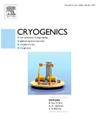Influence of cryogenic temperatures on DC surface flashover characteristics of BNNS-based epoxy nanocomposites
IF 1.8
3区 工程技术
Q3 PHYSICS, APPLIED
引用次数: 0
Abstract
Epoxy resin (EP) is widely used in cryogenic and high-temperature superconductivity related fields for its excellent low-temperature mechanical properties. However, the strong electric field can cause flashing along the surface of EP, which further leads to the destruction of the construction. Herein, to improve the reliability of the insulation structure at cryogenic temperatures, the Boron Nitride Nanosheets (BNNS) Based Epoxy Nanocomposites with improved electrical insulation properties have been prepared. The changes in surface flashover characteristics at 10 temperatures from 10 K to 299 K were detailed studied. Meanwhile, the trap distribution characteristics of composite materials were studied, and the mechanism of BNNS on the surface flashover of composites was analyzed. The results show that the addition of BNNS has a negative effect on improving surface flashover strength at 10 K, and the BNNS content of 1 wt% to 3 wt% BNNS can achieve higher flashover strength of composites at other temperatures. Moreover, unlike pure epoxy resin, the flashover strength of the composites increases first and then decreases with the temperature decrease, which has a maximum point.
低温对基于 BNNS 的环氧纳米复合材料直流表面闪蒸特性的影响
环氧树脂以其优异的低温力学性能被广泛应用于低温和高温超导相关领域。然而,强电场会引起EP表面的闪光,进而导致结构的破坏。为了提高低温下绝缘结构的可靠性,制备了具有改进电绝缘性能的氮化硼纳米片基环氧纳米复合材料。详细研究了10 ~ 299 K 10种温度下表面闪络特性的变化。同时,研究了复合材料的陷阱分布特性,分析了BNNS对复合材料表面闪络的作用机理。结果表明:在10 K时,BNNS的加入对提高复合材料表面闪络强度有负面影响,而在1 ~ 3 wt%的BNNS含量下,复合材料在其他温度下的闪络强度均有所提高。与纯环氧树脂不同,复合材料的闪络强度随温度的降低先升高后降低,且有一个最大值。
本文章由计算机程序翻译,如有差异,请以英文原文为准。
求助全文
约1分钟内获得全文
求助全文
来源期刊

Cryogenics
物理-热力学
CiteScore
3.80
自引率
9.50%
发文量
0
审稿时长
2.1 months
期刊介绍:
Cryogenics is the world''s leading journal focusing on all aspects of cryoengineering and cryogenics. Papers published in Cryogenics cover a wide variety of subjects in low temperature engineering and research. Among the areas covered are:
- Applications of superconductivity: magnets, electronics, devices
- Superconductors and their properties
- Properties of materials: metals, alloys, composites, polymers, insulations
- New applications of cryogenic technology to processes, devices, machinery
- Refrigeration and liquefaction technology
- Thermodynamics
- Fluid properties and fluid mechanics
- Heat transfer
- Thermometry and measurement science
- Cryogenics in medicine
- Cryoelectronics
 求助内容:
求助内容: 应助结果提醒方式:
应助结果提醒方式:


